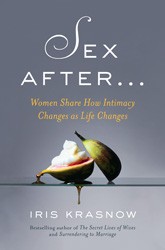By
– March 26, 2012
With baby boomers approaching retirement and with rapid advances in medical technology, more people than ever before will live well into their seventh, eighth, ninth, tenth, and even eleventh decades. The quality of life that we can expect to experience during these years has improved dramatically too. Sherwin Nuland, the retired surgeon who wrote the eloquent and educational How We Die, has explored the subject of aging from a number of perspectives, and shares these in his new and very readable book. This is not a tome of research findings and statistics. Rather, Nuland describes, in non-technical language, what aging means in physical terms, and then introduces his readers to a number of people who have successfully coped with aging and its challenges, from the famous heart surgeon Robert DeBakey, now in his nineties, to ordinary people who have found ways to live their later years in a productive and satisfying way. Perhaps the most touching chapter in the book is a presentation of a correspondence Nuland undertook with a woman from India who wrote to him asking why she should continue to live her life in the face of physical disabilities and losses. Their encounter, over several years, was as revealing to Nuland as it was to her. Chapters on ethical issues (what impact will it have if we find ways to live for two or three hundred years?) and the nature of wisdom add further dimensions to this topic. Nuland’s writing is thoughtful and vibrant, and the advice he offers is well worth taking. Index.
Ruth Berger Goldston is a licensed psychologist in Princeton, NJ and a long-time havurahnik.





